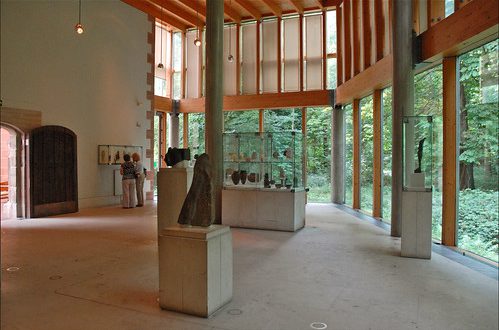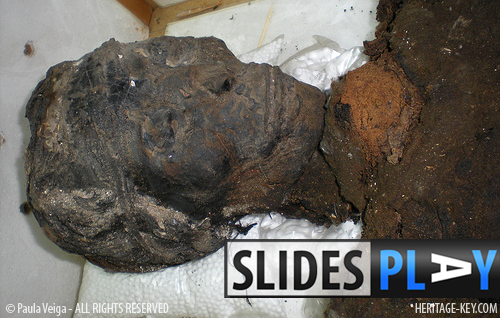 In this Heritage Key video, Dr. Janice Kamrin, head of the EgyptianMuseum Database Project, shows and discusses some of the lifestyle objects found in Tutankhamuns tomb by Carter in 1922, and now housed in The Egyptian Museum in Cairo. Board games, and containers for perfumes, cosmetics and unguents, are amongst the objects shown in this video that give an insight into the livestyles of the rich and famous ancient Egyptians. You can catch up on the previous videos in this series when Dr Kamrin looks at Animal iconography (Watch the video), The Canopic Shrine, Chest and Jars (Watch the video) and last week’s video on the Ritual Figures inside the tomb of King Tut (Watch the video).
In this Heritage Key video, Dr. Janice Kamrin, head of the EgyptianMuseum Database Project, shows and discusses some of the lifestyle objects found in Tutankhamuns tomb by Carter in 1922, and now housed in The Egyptian Museum in Cairo. Board games, and containers for perfumes, cosmetics and unguents, are amongst the objects shown in this video that give an insight into the livestyles of the rich and famous ancient Egyptians. You can catch up on the previous videos in this series when Dr Kamrin looks at Animal iconography (Watch the video), The Canopic Shrine, Chest and Jars (Watch the video) and last week’s video on the Ritual Figures inside the tomb of King Tut (Watch the video).
A Senet game box with game pieces is one of the most intricate and impressive pieces described by Dr Kamrin. King Tut was evidently a big fan of senet, as evidenced by the number of board games found in his tomb. Senet is known to have associations with the gods and goddesses. Dr. Kamrin refers a passage from The Book of The Dead where you would have to play against an invisible opponent and you have to win in order to progress into your own afterlife, although the exact rules of the game are unknown.
 Kamrin also shows us some of the unguent and perfume containers (check out the alabaster perfume vase in detail in King Tut Virtual) that would have been used by King Tut. The ibex-shaped unguent container is a remarkable artefact, with one horn fashioned from real ibex horn, although the second horn is missing. Using real ibex horn would ensure that the content was effective in medicine or magic, or both, as it was usual in ancient Egypt.
Kamrin also shows us some of the unguent and perfume containers (check out the alabaster perfume vase in detail in King Tut Virtual) that would have been used by King Tut. The ibex-shaped unguent container is a remarkable artefact, with one horn fashioned from real ibex horn, although the second horn is missing. Using real ibex horn would ensure that the content was effective in medicine or magic, or both, as it was usual in ancient Egypt.
A calcite cosmetic jar in the form of the god Bes is also on display. The container was perhaps intended for a new mother, as Bes was the protector of women in childbirth, and women and children in general. With his frightening lion face and his tongue hung out, he was meant to scare any demons approaching.
Kamrin then shows us King Tut’s stash of wine jars. The wine jars have their year written as a label on the outside, just as we do it today. The king had estates all over Egypt and one of the jars, says Dr. Kamrin, is from the western delta region vineyards. Wine was a sophisticated industry in Egypt, with a proper grading system in place. But there were no beer jars in his tomb; did Tut dislike beer? It could just be that beer was not considered royal enough for this king. Beer was a common drink of the ordinary people of Egypt and so considered an inferior choice. Perhaps this is the reason that only wine is present in the king’s tomb.
The collection only represents some of the found jars, as Tut had many in his tomb. He was well stocked up for the afterlife with a lot of food and drink (he evidently liked his feasts!), the ordinary supplies for the afterlife. But wine for eternity? No problem. The wine jars could be magically refilled in the afterlife.
With perfume, cosmetics, entertainment and plenty of food and drink available, the objects shown here help build up a picture of a rich and comfortable lifestyle for the ancient Egyptians – and a particular insight into the personality of King Tut. You can read more about the discovery of the tomb of King Tutankhamun in a book authored by the Countess of Carnarvon “Egypt at Highclere: The Discovery of Tutankhamun” (Buy) as well as finding out more about the men who made the amazing find in “Carter & Carnarvon” (Buy)
HD Video: Tutankhamun’s Burial Treasures: Lifestyle Objects
(Read the transcript on the video page)
Enjoyed the video? Then youll love looking through Heritage Keys videos page. Youll find fantastic interviews with top heritage experts, such as Dr Zahi Hawass on the discovery of an intact tomb in Saqqara, theCountess of Carnarvon discussing the tomb paintings of King Tutankhamun’s tomb (KV62) and Kathleen Martinez’s search for the elusive Tomb of Cleopatra. New videos are posted every week sign up to our RSS feed and you wont miss a thing.




